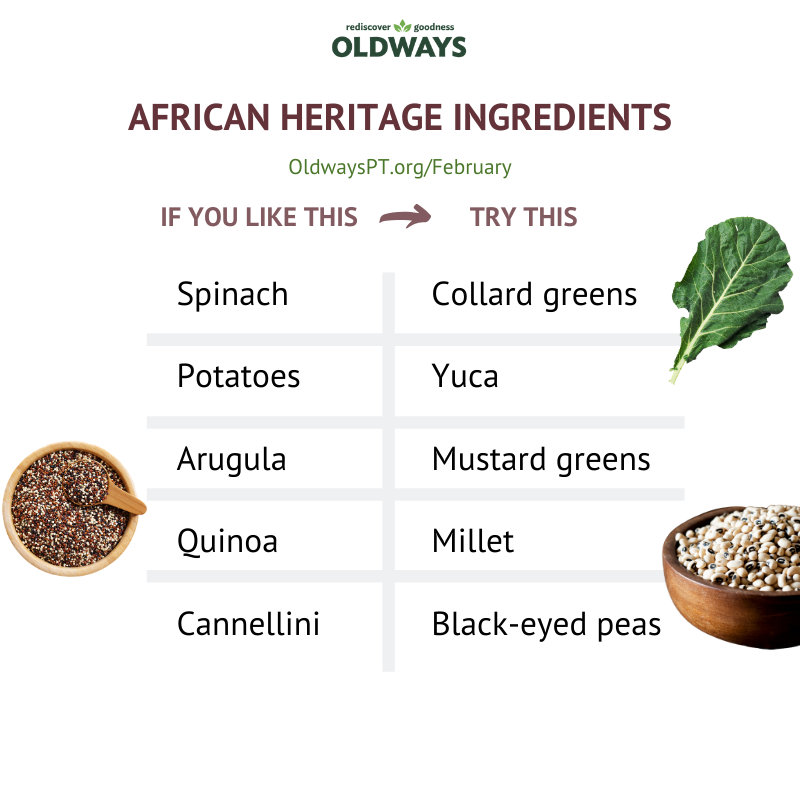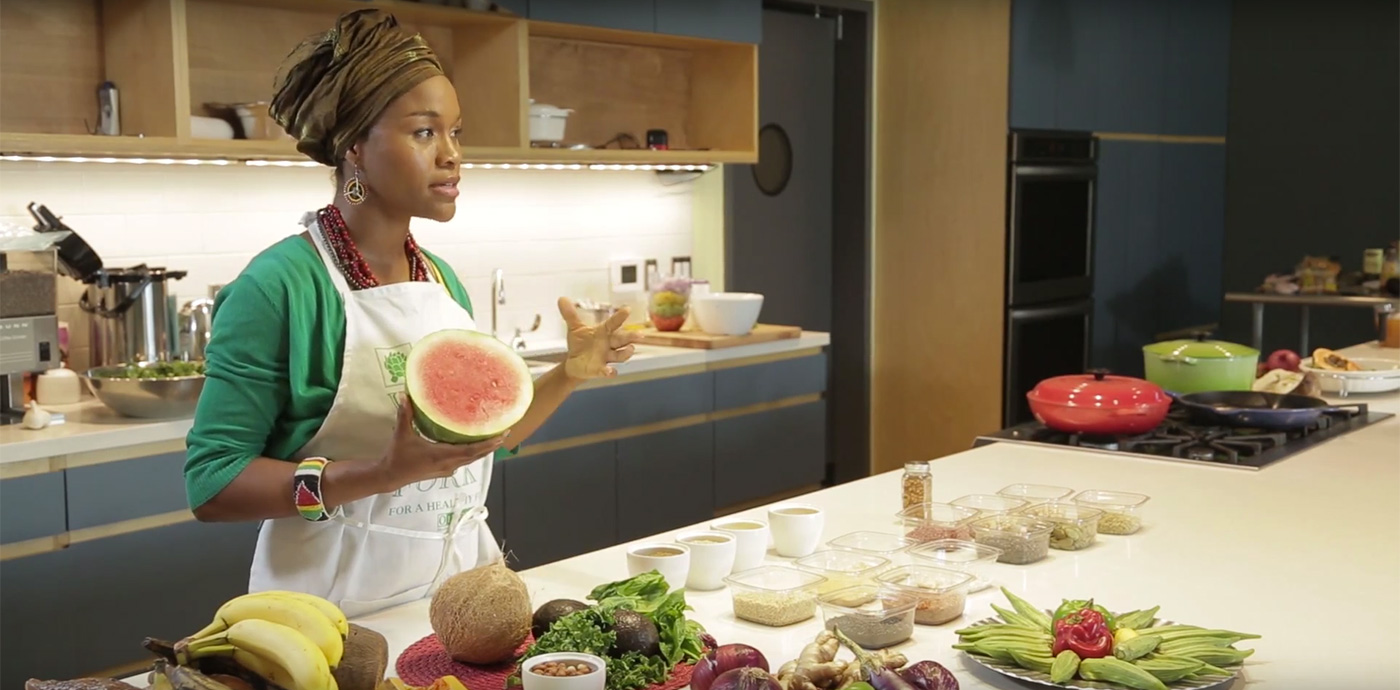Click on any of the infographic images to download. Feel free to print, save, and/or share on social media!
1. Cook with more African Heritage ingredients
Although there are plenty of African Heritage recipes to make, it’s also easy to swap African foods and flavors into any meal you’re preparing. Roasting potatoes to go with dinner? Try yuca instead. Steaming spinach? You might like the taste of collard greens in its place.
2. Socialize, exercise, and connect with your community-the foundation of the African Heritage Diet Pyramid
Movement and socialization are at the foundation of the African Heritage Diet pyramid. This month, make a few changes to your routine to fit in more exercise. Taking the stairs instead of the elevator, pausing your work for a brief stretch or walk, and playing with your kids after school are great ways to get active!
3. Embrace African Heritage herbs and spices
Fresh herbs, garlic, onions, lemon juice, and spices are all low-sodium ways to add incredible flavors to your meals. Always add your spices and herbs before salt, and then take a taste. You may not even need it!
4. Try a cooking technique
When you boil greens, reserve the cooking water! Early African-American cooks knew to use this “green water,” called “pot liquor” or “pot likker,” as a base for soups or sauces. It’s flavorful and full of healthy vitamins and minerals.
5. Take an African Heritage Cooking class-or teach one in your community!
A Taste of African Heritage is a fun, 6-week cooking course taught in libraries, community centers, churches, and health centers across the country. Our teachers are volunteers just like you-people who are passionate about food, health, and their heritage. You don’t need a special culinary or nutrition degree to teach the program. Let’s talk about how to start a class series in your town.










